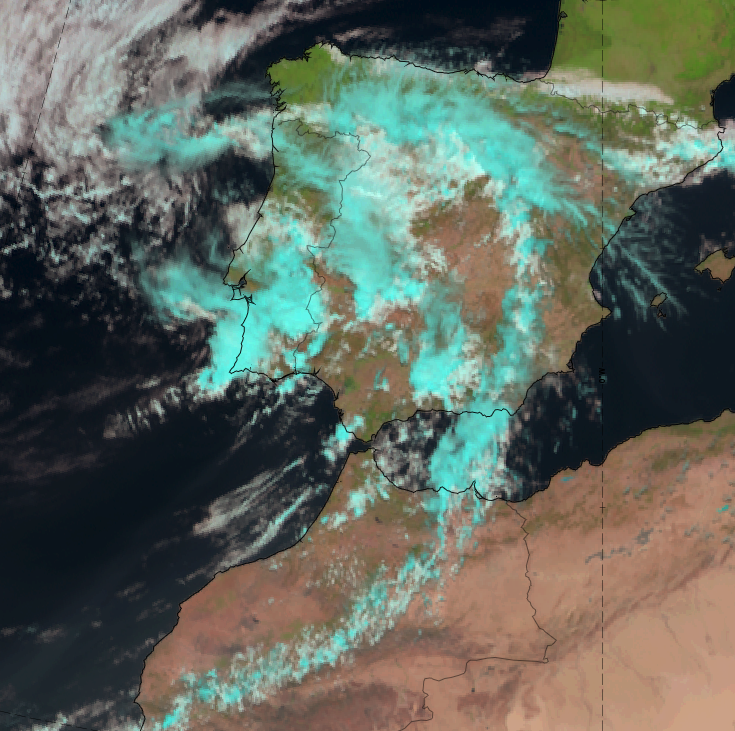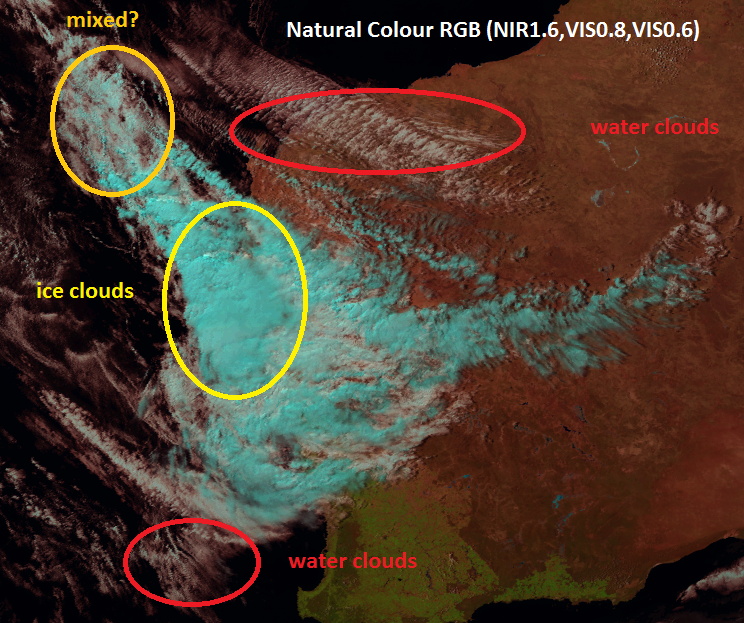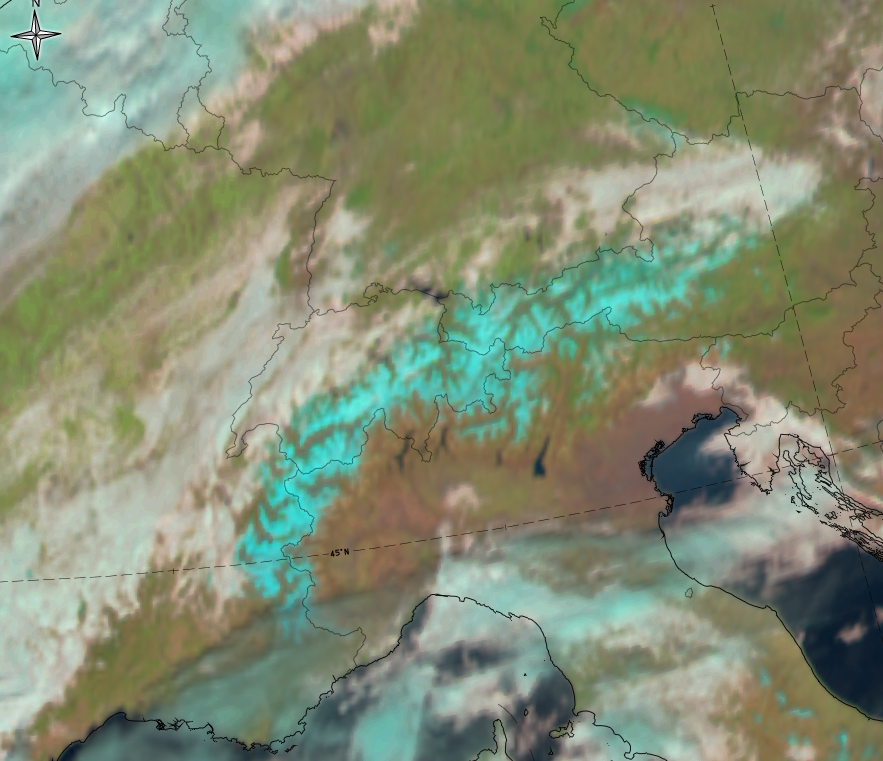cyan
Clouds which prediminantly comprise ice crystals appear cyan in the Natural Colour RGB images.
High reaching, cold clouds like frontal or Cumulonimbus clouds but also thin Cirrus clouds appear cyan in the Natural Colour RGB. Ice crystalls strongly absorb solar radiation at 1.6 micrometer, while it is reflected for a large extent at 0.6 and 0.8 micrometer. With changing sun zenith angles and uneven cloud heights, the illuminated parts of the clouds may cause an inhomogenous cyan colour pattern. Parts of the cloud which reflect more solar radiation might appear brighter than shadowed regions.

Meteosat-10 Natural Colour RGB for 25 June 2017 12:00 UTC
The Natural Colour RGB is nevertheless not able to distinguinsh ice from water clouds under all situations. Warm water clouds with large drop sizes also appear cyan in the Natural Colour RGB as can be seen in Himawari-8 images (see image below, "mixed?" area).

Himawari-8 Natural Colour RGB for 6 September 2017 06:00 UTC
If Himawari channel 2.3 micrometer is used instead of VIS0.8, some parts of the cyan colour in the Natural Colour RGB reveal as being water clouds.

A difficulty may arrise from the fact that snow and ice on the ground show similar cyan colour scales than ice clouds (see green and red arrow in the left hand image). In practise, ice clouds are easy to distinguish from the first by their more intense colour and often clumpy appearance.
Explanation of the colours of ice clouds in the Natural Colour RGB (see also the recipe):
Radiation mesured by the SEVIRI instrument of MSG in channel 1 (0.6 micron) and channel 2 (0.8 micron) contributes much more to the Natural Colour RGB than radiation measured in channel 3 (1.6 micron). Solar radiation is strongly absorbed by snow and ice crystals at 1.6 micrometer while it is strongly reflected in both visible channels at 0.6 and 0.8 micrometer. Cyan is resulting from a mixture of blue and green.
Snow on the ground as well as ice over mountains, frozen lakes and sea ice appear cyan in the Natural Colour RGB images.
In the Natural Colour RGB, the cyan colour of snow and ice on the earth surface results from a strong reflection of short wave solar radiation (see the green arrows on the left hand image). The more homogenous the snow/ice cover is, the brighter the cyan colour will be. Snow and ice on mountains (see the image below) will therefore be depicted in a stronger cyan colour than snowy surfaces on ground which are often disrupted by vegetation.

Natural Colour RGB for 29 January 2016 12:00 UTC
The Natural Colour RGB from early May 2013 shows sea ice at the northernmost part of the Gulf of Bothnia as well as over the lake of Ladoga and Onega (red arrows). Depending on how much melted water is mixed to the ice sheet, the cyan colour range goes from bright (no water) to dark cyan when much of the ice sheets has melted or when the ice sheeld is broken by areas with open water.

Explanation of the colours of snow and ice over land and ice over seas in the Natural Colour RGB (see the recipe):
Radiation mesured by the SEVIRI instrument of MSG in channel 1 (0.6 micron) and channel 2 (0.8 micron) contributes much more to the Natural Colour RGB than radiation measured in channel 3 (1.6 micron). Solar radiation is strongly absorbed by snow and ice crystals at 1.6 micrometer while it is strongly reflected in both visible channels 0.6 and 0.8 micrometer. Cyan is resulting from a mixture of blue and green.


